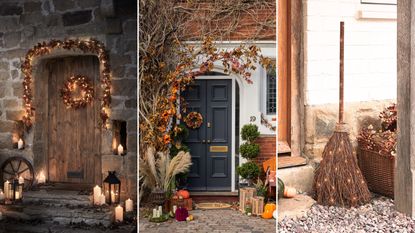Backyard and Front Yard
The latest Backyard and Front Yard breaking news, comment, reviews and features from the experts at Realhomes
-
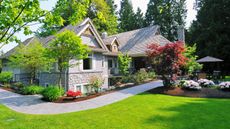
Will landscaping increase home value? We asked the pros
Realty experts weigh in to decide if landscaping will increase home value. See what alterations you can make to your outdoor set-up
By Emily Lambe Published
-
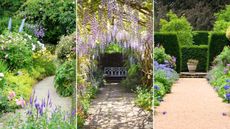
Regency garden ideas — 7 ways to create an elegant, Bridgerton-style outdoor space
Looking for regency garden ideas? We've asked the pros for their top design and gardening tricks that will add elegance and refinement to your backyard
By Eve Smallman Published
-
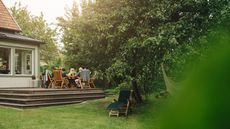
Backyard privacy mistakes — 9 garden gaffes to avoid and what to do instead
Wondering about the most common backyard privacy mistakes? Our landscaping experts run through 9 common backyard blunders — and what to do instead
By Andy van Terheyden Published
-

10 easy DIY landscaping ideas to elevate your backyard
Our easy DIY landscaping ideas will help you upgrade your backyard – from a lick of paint to raised beds, we've got you covered
By Sophie Warren-Smith Published
-

Impactful landscaping ideas for small backyards that will transform your space — 10 ideas to inspire
From wood paneling and a lick of paint to planters and fire pits, our landscaping ideas for small backyards will refresh your space
By Sophie Warren-Smith Published
-

The 2024 sustainable landscaping trend is the only one worth trying, gardening pros reveal
Looking for a new landscaping trend to try? We've asked designers for their top one for 2024, plus picked out essentials to help you get started
By Eve Smallman Published
-
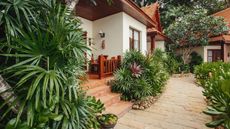
These 6 tropical landscaping ideas will give your space a resort feel
Our tropical landscaping ideas will uplift your backyard with water features, lush plants, vibrant shades, and tactile materials in bright colors
By Sophie Warren-Smith Published
-

10 deck privacy ideas for a beautifully secluded space
Discover our deck privacy ideas to create a tranquil garden space including clever ideas like installing a pergola and using tall plants and trees
By Rosie Hilder Published
-

These 12 front yard privacy ideas will add stylish seclusion and serenity to your space
Searching for front yard privacy ideas? These useful tips from design and landscaping experts how you can created a secluded space with clever tricks
By Eve Smallman Published
-

How to create backyard privacy without blocking light — 7 clever solutions for a bright and beautiful space
Want to know how to create backyard privacy without blocking light? We've asked designers how you can keep the rays in your yard and prying eyes out with a few clever tricks
By Eve Smallman Published
-
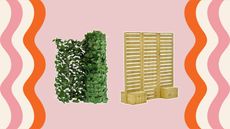
Home Depot backyard buys from $85 that are perfect for protecting your privacy
We scoured Home Depot backyard finds from $85 that will help you keep your privacy in your backyard
By Danielle Valente Published
-

Backyard games for adults under $40 to scoop up this spring
We round up backyard games for adults that are fun, perfect for small spaces and under $40. Which will you play first?
By Danielle Valente Published
-

Katie Couric's backyard is perfect for spring — here's how to recreate the look
Katie Couric's backyard is perfect for spring — hammock, florals, and all. Here's how to get the look in a small space, according to a designer
By Danielle Valente Published
-

10 budget backyard ideas that will transform your small outdoor space
These budget backyard ideas are perfecting for switching up your small space, and won't cost you a lot of dollar...
By Kaitlyn McInnis Last updated
-
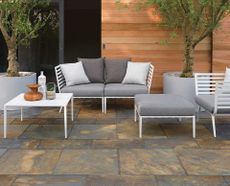
16 garden paving ideas – how to create the perfect patio space in your backyard
Garden paving ideas: Use our design tips and advice to create the perfect paved patio or courtyard space in your backyard.
By Lucy Searle Last updated
-

How to landscape a front yard without plants
Explore front yard landscaping ideas without plants for minimum upkeep but maximum curb appeal. You can still design a cool front of house – without using shrubs or grass
By Anna Cottrell Last updated
-
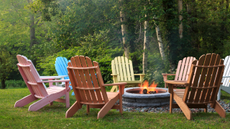
10 backyard improvements that add value to your home instantly
Some backyard improvements will be more worth your while than others. Tackle these projects over spring and summer to enjoy more of your outside space and to add value to your property almost instantly
By Terri Williams Last updated
-

Bobby Berk's eco-friendly backyard upgrade we're copying for summer
This is the most sustainable backyard trend of 2022, according to designer Bobby Berk and it's super easy to install too
By Anna Cottrell Published
-

9 side yard ideas: Add light and purpose to this narrow, unused space
These side yard ideas will help you rethink the dead space on the side of your home. Transform your side yard into a green oasis, outdoor kitchen, or even a pool area
By Anna Cottrell Published
-

Garden designer warns against this small yard mistake – and what to do instead
Garden designer Kate Gould explains why going bigger is always better in a small yard
By Camille Dubuis-Welch Last updated
-
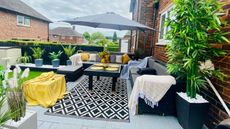
See how DIY lovers transformed their backyard into a stylish outdoor living space on a budget
A thrifty couple transformed their neglected garden into a highly functional and relaxing backyard living space on a budget, and the result is unrecognizable
By Millie Hurst Last updated
-

53 small backyard ideas that will transform even the tiniest of spaces
Turn a tiny plot into a verdant oasis with small backyard design ideas that are sure to impress all year long.
By Anna K. Cottrell Published
-
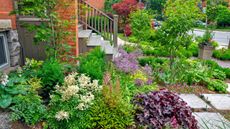
10 budget front yard landscaping ideas to copy in 2022
These budget front yard landscaping ideas will make the view beyond your porch look like a million dollars (without actually costing you very much at all).
By Anna Cottrell Last updated
-

Having these two plants in your front yard could help sell your home
A gardening expert recommends these two plants that will appeal to the most buyers
By Millie Hurst Published
-
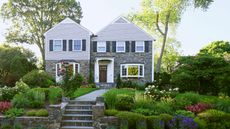
16 vibrant front yard landscaping ideas to make your home stand out
From sculptural statements with succulents to creating social spots for catching up with neighbors, the most stylish front yard landscaping ideas will make your plot standout from the rest.
By Jill Morgan Published
-
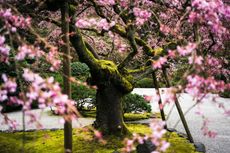
6 Japanese garden ideas: create a Zen space in your back yard
These Japanese garden ideas will help you create an outdoor space that's tranquil, harmonious, and beautiful
By Anna Cottrell Published
-

How to lay block paving: an easy guide to paving a driveway
Expert renovator Michael Holmes offers his advice on how to lay a block paved driveway
By Michael Holmes Last updated
-
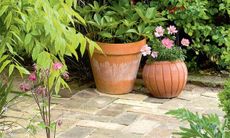
How to build a herringbone path
Set aside a couple of weekends to build a traditional path that will create a focal point in your garden. DIY expert Helaine Clare shares her step-by-step guide to building a herringbone path
By Helaine Clare Last updated
